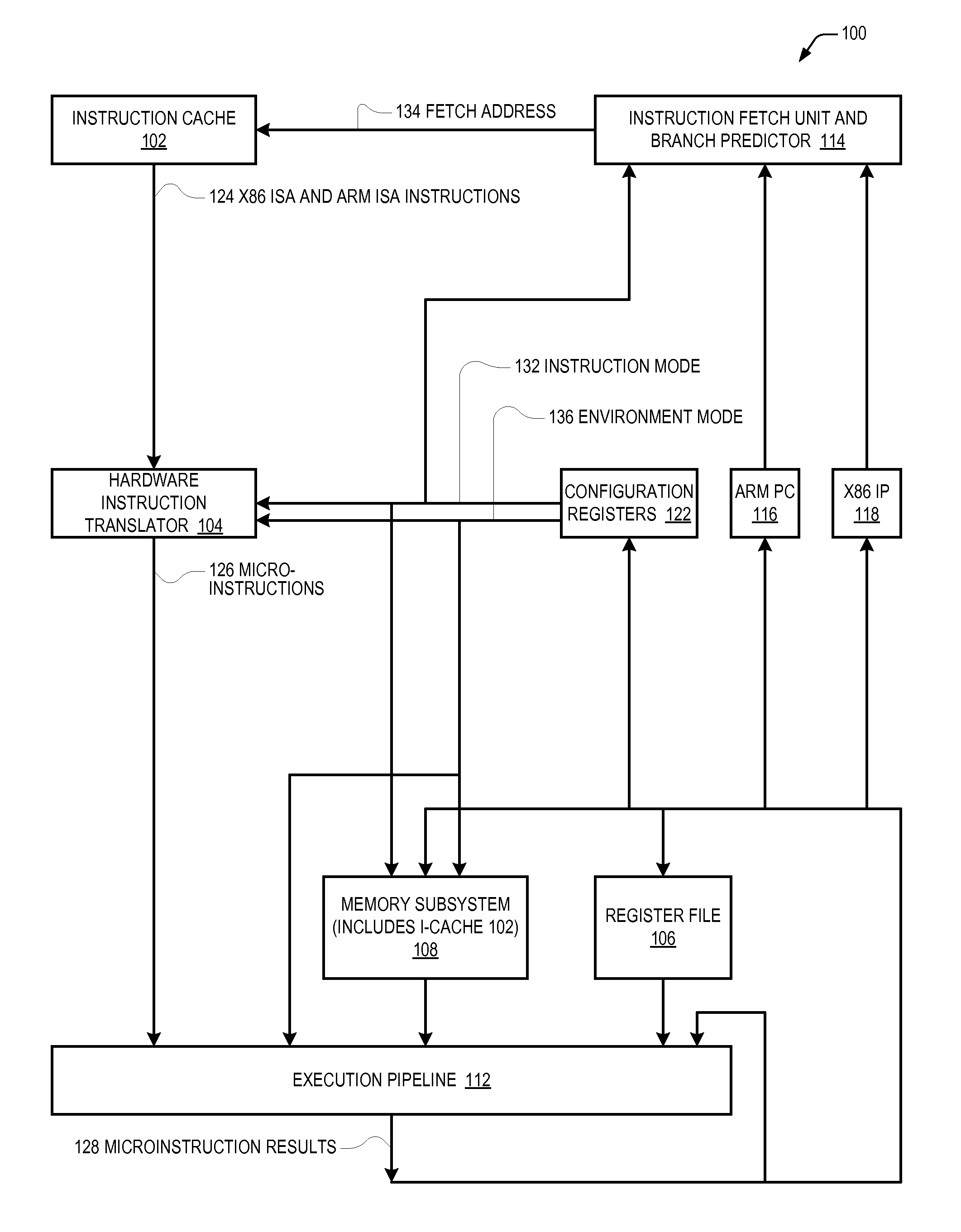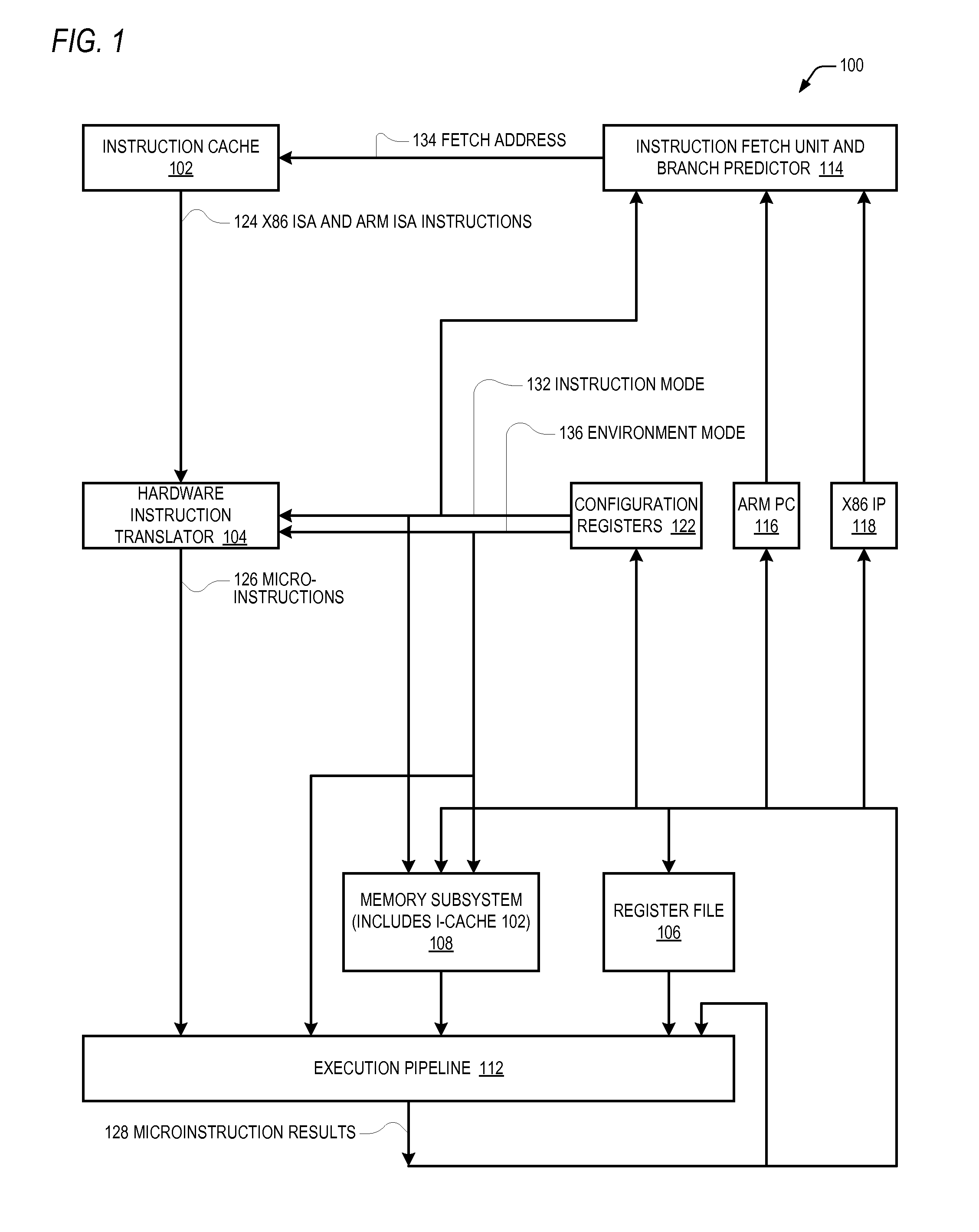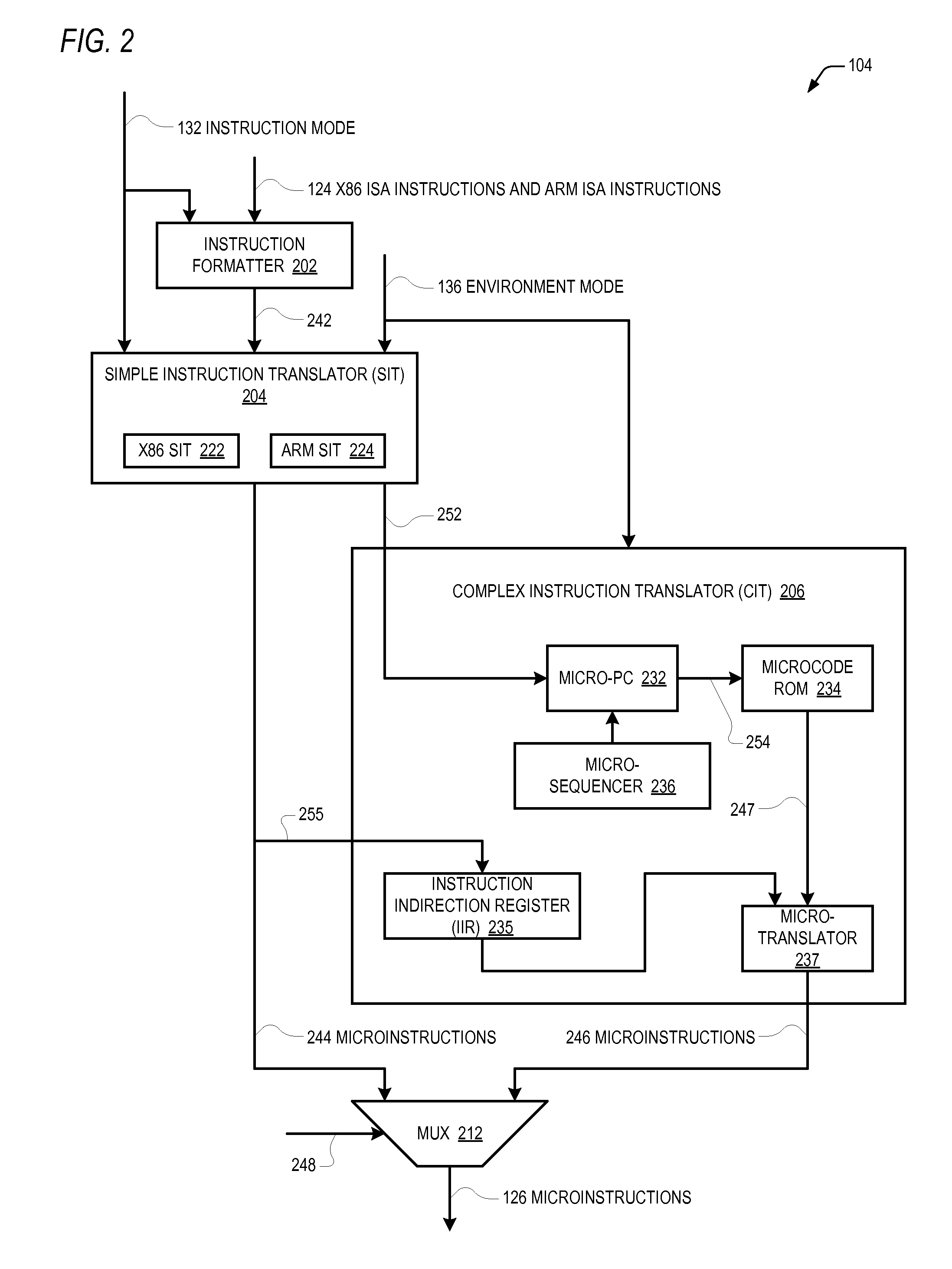Microprocessor that performs x86 isa and arm isa machine language program instructions by hardware translation into microinstructions executed by common execution pipeline
a microprocessor and program instruction technology, applied in the field of microprocessors, can solve the problems of large amounts of computing systems, the line between the different markets is evidently fading, and the manufacturers and consumers of computing devices in a dilemma
- Summary
- Abstract
- Description
- Claims
- Application Information
AI Technical Summary
Problems solved by technology
Method used
Image
Examples
Embodiment Construction
Glossary
[0025]An instruction set defines the mapping of a set of binary encoded values, which are machine language instructions, to operations the microprocessor performs. (Typically, machine language programs are encoded in binary, although other number systems may be employed, for example, the machine language programs of some older IBM computers were encoded in decimal although they were ultimately represented by collections of physical signals having voltages sensed as binary values.) Illustrative examples of the types of operations machine language instructions may instruct a microprocessor to perform are: add the operand in register 1 to the operand in register 2 and write the result to register 3, subtract the immediate operand specified in the instruction from the operand in memory location 0x12345678 and write the result to register 5, shift the value in register 6 by the number of bits specified in register 7, branch to the instruction 36 bytes after this instruction if th...
PUM
 Login to View More
Login to View More Abstract
Description
Claims
Application Information
 Login to View More
Login to View More - R&D
- Intellectual Property
- Life Sciences
- Materials
- Tech Scout
- Unparalleled Data Quality
- Higher Quality Content
- 60% Fewer Hallucinations
Browse by: Latest US Patents, China's latest patents, Technical Efficacy Thesaurus, Application Domain, Technology Topic, Popular Technical Reports.
© 2025 PatSnap. All rights reserved.Legal|Privacy policy|Modern Slavery Act Transparency Statement|Sitemap|About US| Contact US: help@patsnap.com



